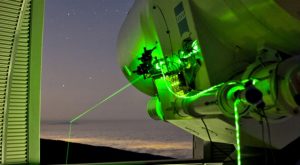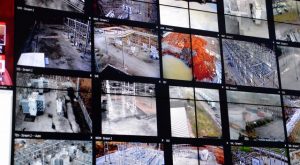
For the past few years, practical quantum computing breakthroughs have been led by companies like Google and D-Wave, working in partnership with NASA. As we’ve determined that D-Wave’s computers are, in fact, quantum computers, interest has grown in building quantum computing solutions that can solve different types of problems more efficiently than D-Wave can. To date, D-Wave’s products have been based on sparsely connected groups of qubits. While this approach has been generally proven to work, it limits the types of problems that the machine can solve. Now, Microsoft is publicly throwing its own hat into the ring with a new quantum computing initiative — and a new type of system known as a topological quantum computer.
In a new blog post, Microsoft announced that it has hired new leaders in the quantum computing field and is expanding its efforts to develop its own machine. Leo Kouwenhoven and Charles Marcus are both experts in the field and Kouwenhoven is credited with discovering evidence that Majorana particles, which were predicted theoretically in 1937, actually exist. Both men have collaborated with Microsoft for years, but the Redmond-based company hasn’t talked much about its quantum aspirations much to date. Microsoft has also created an introductory video explaining quantum computing, as shown below:
So why are companies building quantum computers? It’s not because there’s any real hope of miniaturizing them or building them with conventional semiconductor technologies; quantum computers require supercooling and incredibly advanced manufacturing techniques that make them unlikely for wide deployment. What quantum computing promises is the ability to compute certain types of problems far more quickly and efficiently than conventional systems can manage. In some cases, quantum computers are believed to be theoretically capable of solving problems that classical machines wouldn’t solve before the heat death of the universe.
Harnessing this kind of power for science means developing new types of software as well, and Microsoft is devoting a considerable amount of effort to creating programs that could run on quantum computers. As with much of quantum computing, it’s not clear when or if these efforts will bear fruit. But a fully functional quantum computer that could be applied to problems that D-Wave’s quantum annealers can’t solve would be a revolutionary breakthrough. It might never shrink to the size of something you can fit in your pocket, but it wouldn’t take many quantum computers to change the world.
Multiple companies like IBM are also working on making quantum computing available via cloud infrastructure. If it works, it implies that while quantum computers might be relatively few in number, their benefits could be much more widely distributed.
This MIT Technology Review article delves deeper into an explanation of topological quantum computing and the difficulty of building one, if you’d like more information.


